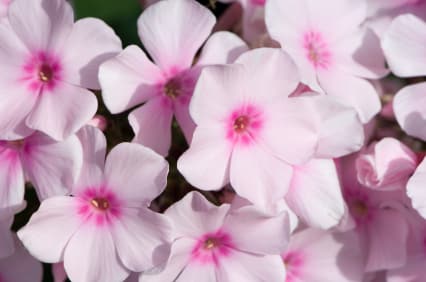Phlox
Phlox (pronounced “flocks” and meaning ‘flame’ in Latin) is one of 67 similar species of annual or perennial flowering plants. Some variaties flower in early spring while others flower in summer into fall. This is an extremely hardy palnt that can thrive happily in a widely divergent range of habitats, from alpine locations to open woodlands and prairies. The lovely flowers range in color from pale blue to bright red to white and bloom in Central Park from July to September, the plants providing some of the most vibrantly colorful blooms that can be found in Conservatory Garden in early fall. Some species such as Phlox glaberrima (Smooth Phlox) grow to three feet tall, while others, such as Phlox stolonifera (Creeping Phlox), form low mats only a few centimetres in height. This is a species that knows how to take advantage of whatever limited housing is available.

Phlox
Phlox is a very popular perennial for borders and beds and performs in this role admirably in the Conservatory Garden. Its robust appearance, upright posture, long blooming period, and colorful flowers ensure that it never goes unnoticed. The wild species, Phlox paniculata, is seldom found in cultivation, but does grace many an American highway in its uncultivated from.
One of the most delightful things about Phlox is that not only is it a lovely and colorful addition to the Conservatory Garden that will bloom well into the fall, it is also local talent. Unlike so many of the other flowers that are cultivated by the very talented horticulturalists of the Conservancy, Phlox is a plant species that is actually indigenous to North America. No Old World antecedents here, just a beautiful flower from the neighborhood (relatively speaking) that made good in the big city.
 Conservatory Garden
Conservatory Garden
One of the hidden wonders of Central Park is the Conservatory Garden at Fifth Avenue and 105th St. A secluded oasis, just a few steps down from one of the City’s busiest thoroughfares; the garden offers a fragrant respite from the gasp and clatter of the urban afternoon.


